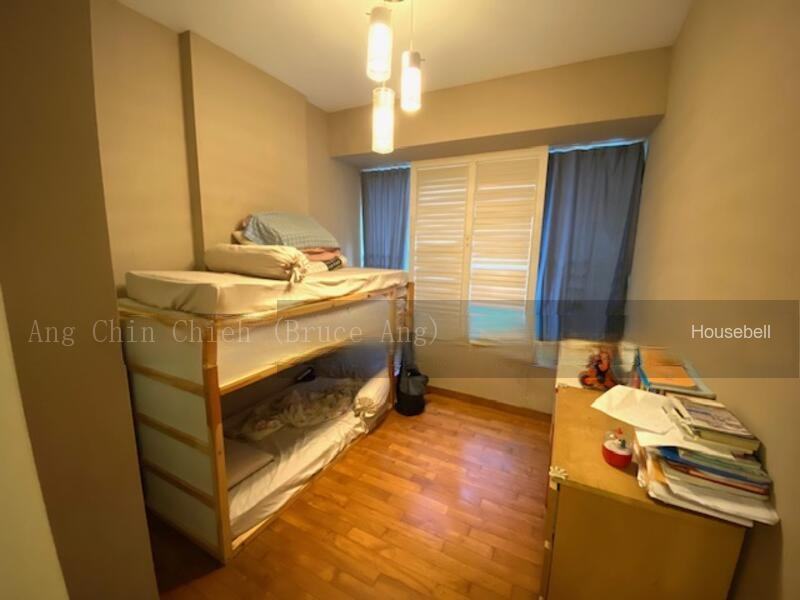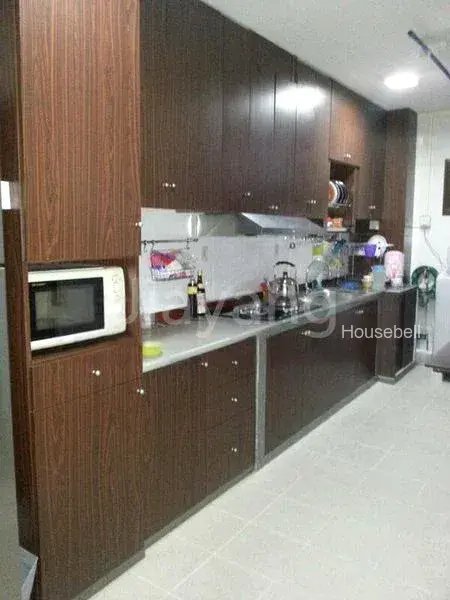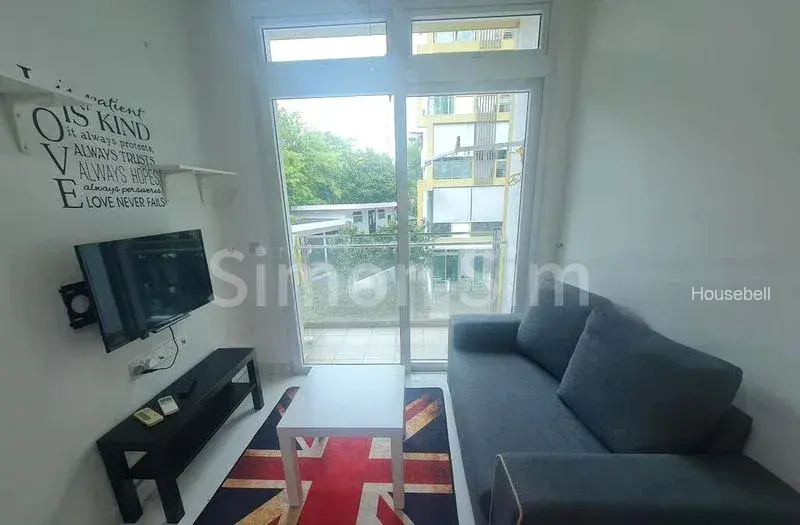Selected Sales for You
Selected Rents for You
Selected Videos for You
Selected
LyndWoods户型详解 第三篇
Selected
LyndWoods户型详解 第二篇
Selected
LyndWoods项目解析 第一篇
Selected
The Lakegarden Residences 第二篇
Guides for You
Singapore Area Guide(5)Tiong Bahru – The Perfect Blend of Vintage Charm & Urban Living
I. Area OverviewTiong Bahru is one of Singapore’s most distinctive and culturally rich residential neighborhoods, often regarded as “Singapore’s most beautiful heritage district.” Located on the fringe of the Central Area, it is close to River Valley, Orchard, and the CBD, offering strong location advantage.The neighborhood features a mix of preserved pre-war walk-up apartments and modern high-rise condominiums, making it a favorite among young professionals for its unique blend of nostalgic character and urban convenience.• Singapore’s first public housing estate, featuring iconic pre-war Art Deco-style flats• Many buildings are URA-conserved, preserving curved balconies, spiral staircases, and horizontal lines• A rare example of early modernist urban planning in Southeast AsiaII. Lifestyle & Amenities☕ Café & Dining SceneTiong Bahru is widely regarded as one of the birthplaces of Singapore’s café culture and is home to several well-known establishments, including:• Tiong Bahru Bakery• Forty Hands• Plain Vanilla• Merci MarcelThe neighborhood has a strong artistic and creative atmosphere, making it ideal for a relaxed lifestyle, social interaction, and photography.🏪 Shopping & Retail• Tiong Bahru Plaza• Tiong Bahru Market• A wide range of specialty shops, salons, grocers, bookstores, and independent brands🚇 Transportation• Served by Tiong Bahru MRT station on the East‑West Line• Approximately a 10‑minute drive to the CBD, Orchard Road, and Marina Bay• Convenient access to major expressways such as the CTE and AYEⅢ. Property Types & Price Trends• Property Types:o Conserved pre‑war residential buildingso Modern condominiumso Mature HDB estates in the surrounding area• Sale Market (2025 estimates):o Average condominium prices: S$2,000–2,800/sqfto High-end developments may reach S$3,000/sqft• Rental Market (Condo):o 1-bedroom: S$3,000–4,500 per montho 2-bedroom: S$4,500–6,500 per montho 3-bedroom: S$6,000–10,000 per monthDue to its proximity to the city centre and the area’s distinct character, both the sales and rental markets remain highly activeⅣ. Resident Profile & VibeTiong Bahru typically attracts:• Young professionals• Creative industry professionals• Expatriate white‑collar residents• Individuals who appreciate an arts‑focused and cultural atmosphere• Residents seeking city‑fringe convenience without excessive noise or congestionThe neighborhood offers a lived‑in, character‑rich community atmosphere and is widely regarded as one of Singapore’s most “European‑style” districts.V. Investment Outlook• Limited property supply and strong district character support long-term value retention• Strategic location near River Valley, Great World, and Orchard underscores its prime positioning• Conserved heritage architecture continues to attract overseas investors and younger buyer segments• Ongoing government preservation policies help sustain the area’s long-term appeal and stabilityVI. SummaryIn summary, Tiong Bahru’s defining feature is its rare combination of architectural heritage, central-city accessibility, and vibrant café culture, making it one of Singapore’s most character-rich and sought-after neighbourhoods.Housebell, the fastest-growing bilingual property platform in Singapore, with an extensive inventory of verified listings, cutting-edge AI Agent technology, immersive VR viewing,and other high-tech features, makes your home search more convenient and efficient!
Singapore Area Guide(4)Queenstown/Redhill – Value Regeneration in a Mature Estate
I. Area OverviewQueenstown is one of Singapore’s earliest planned housing estates and has recently re-emerged as a real estate hotspot. Located within the Rest of Central Region (RCR), it offers excellent connectivity, comprehensive amenities, and robust rental and resale demand, making it a favourite among young families and investors.Neighbouring Redhill enjoys a similarly strategic location. Its proximity to the Greater Southern Waterfront and the city centre brings renewed growth potential to this traditional residential enclave.For those seeking to rent, purchase, or invest in Singapore, the area offers highly attractive opportunities that combine strong value with long-term appreciation prospects.II. Lifestyle & Amenities🛍️ Shopping & Daily Essentials• Anchorpoint, Queensway Shopping Centre, and IKEA Alexandra.• The new neighbourhood centre in Dawson offers modern facilities surrounded by lush greenery.• Redhill is home to the popular Redhill Food Centre, ensuring exceptional everyday convenience.🚇 Transportation• Well-served by three MRT stations — Redhill, Queenstown, and Commonwealth.• Only 10–15 minutes by train to Orchard, the CBD, and HarbourFront.• Convenient access to Alexandra Road and the Ayer Rajah Expressway (AYE) for easy driving connectivity.🌿 Greenery & Recreation• Alexandra Canal Linear Park.• HortPark and Kent Ridge Park.• The nearby Rail Corridor (former railway track) offers an ideal route for outdoor activities and leisure walks.III. Property Types & Price TrendsThe Queenstown/Redhill area features a mix of mid-to high-end condos, and upgraded HDB estates. Numerous new projects in recent years have driven price growth.• Average Condo Prices (2025 Reference):o S$2,100 - S$2,800 psf.o High-floor units in new launches like Stirling Residences and Queens Peak can reach S$2,500+ psf.• Condo Rental Market:o 1-Bedroom: S$2,500 - S$4,500/month.o 2-Bedroom: S$4,000 - S$6,000/month.o 3-Bedroom: S$5,000 - S$9,500/month.Rental demand remains strong, driven primarily by staff from nearby hospitals, professionals from tech firms in the one-north area, CBD white-collar workers, as well as a significant number of NUS students.IV. Residents & VibeQueenstown / Redhill is well suited for:• Young families.• Medical professionals, given its proximity to NUH and the one-north biomedical hub.• Expatriate white-collar professionals working in the CBD.• Buyers who prioritize lifestyle convenience and short commuting distances.• Investors seeking locations with strong capital appreciation potential.The area offers a green, modern living environment and has seen rapid community renewal, making it a notable example of successful regeneration in a mature estate.V. Investment Outlook• The massive Dawson estate renewal project has dramatically refreshed the area's profile.• Proximity to the one-north tech park ensures long-term, stable rental demand.• Redhill's adjacency to the future Greater Southern Waterfront promises significant growth.• A dynamic property market fueled by a mix of old and new projects.Overall, Queenstown / Redhill presents a compelling investment case, combining urban renewal, strong rental fundamentals, and long-term growth drivers.VI. SummaryIn summary, Queenstown / Redhill stands out as a mature yet evolving estate that balances liveability, accessibility, and long-term growth prospects, making it attractive to both owner-occupiers and investors.Housebell, the fastest-growing bilingual property platform in Singapore, with an extensive inventory of verified listings, cutting-edge AI Agent technology, immersive VR viewing,and other high-tech features, makes your home search more convenient and efficient!
Singapore Area Guide(3)Bukit Timah – Synonymous with Top Schools and Premium Living
I. Area OverviewBukit Timah has long been regarded as Singapore's quintessential upscale residential enclave, renowned for its landed housing, freehold condominiums, top-tier schools, and natural environment.Located within the Core Central Region (CCR), it is highly sought after by local affluent families and long-term expatriates, solidifying its status as Singapore's traditional "prime residential belt."It is also home to the nation's most sought-after "school district housing," with numerous elite educational institutions clustered in the area.II. Lifestyle & Amenities🏫 Top-Tier Educational Hub (Most concentrated in Singapore)The Bukit Timah area boasts some of Singapore's most prestigious schools, which sustains strong owner-occupier demand, exceptional "school district" appeal, and remarkable price stability.• Nanyang Primary School• Nanyang Girls’ High School• Raffles Girls’ Primary School• Methodist Girls' School• Hwa Chong Institution• National Junior College• Singapore Chinese Girls' School• Anglo-Chinese School (Primary) / Anglo-Chinese School (Junior)• Henry Park Primary School• St. Joseph's Institution🛍️ Shopping & Dining• Shopping malls like Bukit Timah Plaza, Bukit Timah Shopping Centre, King Albert Park (KAP) Mall, Coronation Plaza, and Cluny Court, along with various shophouse stores and restaurants, provide comprehensive daily necessities.• Holland Village, Orchard Road, and the Botanic Gardens are just a 10-15 minute drive away.🌿 Natural EnvironmentCentered around the UNESCO-listed Singapore Botanic Gardens, this area and its surroundings represent the greenest, most livable, and most established residential locale on the island, bar none.III. Property Types & Price TrendsBukit Timah's property market is dominated by freehold condominiums and landed homes (including Good Class Bungalows (GCBs), detached, semi-detached, and terrace houses). With very few HDB flats, it is a traditional affluent district with one of the highest wealth densities in Singapore.• Sale Prices (2025 Reference):o Resale Condos (Avg.): S$2,500 – S$3,500 psfo New Launch Luxury Projects (e.g., Perfect Ten, Watten House): Up to S$3,400 – S$4,000 psfo Landed Plots (GCBs): Often command prices in the hundreds of millions• Rental Market:o 2-Bedroom Condo: S$5,500 – S$7,000 / montho 3-Bedroom Condo: S$7,000 – S$12,000 / montho 4-Bedroom Condo: S$8,000 – S$35,000 / montho Landed Houses: Can range from S$10,000 – S$100,000+ / monthIV. Residents & VibeTypical residents of Bukit Timah include:• Local families prioritizing education• Long-term Permanent Resident (PR) and Employment Pass (EP) holder families• Expatriate executives and relocated families• High-income, high-net-worth individuals seeking a tranquil living environmentThe area offers a quiet atmosphere, a mature community, and a stable lifestyle, epitomizing the "family-friendly luxury neighbourhood."V. Investment Outlook• Strong, sustained demand for school district housing ensures a stable resale market with significant resilience against market cycles.• High proportion of freehold properties enhances long-term value retention.• Proximity to the Botanic Gardens and nature reserves adds ecological scarcity and boosts living value.VI. SummaryHousebell, the fastest-growing bilingual property platform in Singapore, with an extensive inventory of verified listings, cutting-edge AI Agent technology, immersive VR viewing,and other high-tech features, makes your home search more convenient and efficient!
Singapore Area Guide(2)Marina Bay & CBD — The Ideal Home for Urban Elites and Investment Hotspot
I. Area OverviewMarina Bay and Singapore's Central Business District (CBD) are the most international areas on the island. This zone is a hub for finance, technology, and multinational corporate headquarters, making it one of the most popular living circles for expatriate professionals.For buyers looking to invest in Singapore property, condos in the CBD are consistently among the most watched segments in the Core Central Region (CCR), prized for their scarcity, strong rental demand, and superior views.Marina Bay is famous for its iconic landmarks – such as Marina Bay Sands, Marina Bay Financial Centre, Esplanade – Theatres on the Bay, and Gardens by the Bay – representing Singapore's "calling card to the world."II. Lifestyle & Amenities🛍️ Shopping & Entertainment• Marina Bay boasts large shopping malls like Marina Bay Sands, Marina Square, Suntec City, and Raffles City.• The CBD has a high density of dining options, catering to all tastes from Michelin-starred restaurants to convenient business lunches.🚇 Transportation• A dense network of MRT interchanges (Marina Bay, Tanjong Pagar, Raffles Place) provides convenient access to multiple lines.• While the MRT often gets the spotlight, bus services in the CBD are remarkably efficient, especially for short-distance connections, playing a vital role in shuttling people between MRT stations and major office buildings.• Walking distance to workplaces makes this an ideal commuting model for expatriate white-collar workers.🏥 Healthcare & Recreation• The area's proximity to Gardens by the Bay, Esplanade, and the Helix Bridge makes it perfect for running, walks, and evening leisure.• The area hosts numerous private General Practitioner (GP) clinics and is also close to Raffles Hospital.III. Property Types & Price TrendsThe Marina Bay/CBD area primarily consists of 99-year leasehold condominiums, mainly luxury condos, high-rise view units, and compact apartments. There are also some HDB flats, but view premiums are significant• Sale Prices (2025 Reference)o Average resale price for area condos: ~S$2,000+ psfo Iconic projects like Marina One Residences can reach S$2,900+ psfo New launches in the area, such as One Marina Boulevard and W Residences Marina View, launched at average prices of S$3,000-$4,000 psfo Skywaters Residences, developed by Alibaba and set to be Singapore's tallest building near Tanjong Pagar MRT, commands prices up to S$6,500 psf• Rental Marketo 1-Bedroom Condo: S$4,500–7,000/montho 2-Bedroom Condo: S$6,500–10,000/montho Vacancy rates are low for high-end projects near MRT stations and amenities, with tenants primarily being expatriate professionals.IV. Residents & VibeThis area embodies the quintessential "downtown core lifestyle." The main resident profiles include:• Expatriate white-collar workers in finance and tech• International professionals who travel frequently• High-income individuals seeking an efficient lifestyle• Investors targeting rental returnsThe area's ambiance is modern, international, and fast-paced, representing Singapore's most "metropolitan" living environment.V. Investment Outlook• The Singapore government continues to position Marina Bay as a leading Asian financial hub, ensuring long-term, stable demand for office space.• Limited housing supply in the CBD, coupled with a generally high-quality tenant pool, leads to stable rental demand.• The surrounding Greater Southern Waterfront development is set to become a major new growth pole. Many expatriate families will likely choose to live in this connected area, potentially further boosting the value of the core district.VI. Summary Housebell, the fastest-growing bilingual property platform in Singapore, with an extensive inventory of verified listings, cutting-edge AI Agent technology, immersive VR viewing,and other high-tech features, makes your home search more convenient and efficient!
Singapore Area Guide (1) Orchard / Newton – Luxury Living in a Prime Location
I. Area OverviewIf you’re considering purchasing property in Singapore, Orchard Road and Newton are two areas you must get to know. Orchard Road is Singapore’s most iconic upscale commercial and residential district. Located within the Core Central Region (CCR), it is home to world-class shopping malls, five-star hotels, and luxury condominiums—a true symbol of refined urban living in Singapore.Adjacent to it, Newton is celebrated for its tranquil and family-friendly environment, excellent schools, and superb connectivity. Together, Orchard and Newton form a prestigious enclave where vibrancy and serenity coexist. With MRT stations such as Orchard, Newton, and Stevens seamlessly linked, commuting to the Central Business District (CBD), the Orchard shopping belt, or the Marina Bay area is exceptionally convenient.II. Lifestyle & Amenities• Shopping & Dining Orchard Road is Singapore’s premier shopping paradise, lined with landmark malls such as ION Orchard, Ngee Ann City, and Paragon, which feature an extensive selection of international luxury brands and fine dining options. In nearby Newton, the Newton Food Centre is famed for its authentic local hawker fare and remains a popular evening hangout for both expatriates and locals.• Healthcare & Recreation Prestigious medical facilities such as Mount Elizabeth Hospital and Paragon Medical Centre are located within the district, offering world-class healthcare services. Just a short distance away, the Singapore Botanic Gardens—a UNESCO World Heritage Site—and Fort Canning Park provide residents with lush green spaces ideal for relaxation and outdoor activities.• Education The Newton area is surrounded by many of Singapore’s most reputable schools, making it a highly sought-after location for families:o Anglo-Chinese School (Primary & Junior)o St. Joseph's Institutiono Singapore Chinese Girls’ School (SCGS)The presence of these elite institutions enhances the district’s desirability for both own-stay and investment purposes.III. Property Types & Price TrendsThe Orchard–Newton area is dominated by high-end condominiums and luxury residences, characterized by limited supply and a highly active market.• Average New Launch Prices (as of 2025):o Projects in the Core Central Region (CCR) average around S$3,300 psf.o The renowned Ardmore Park, a classic luxury development completed in 2001, continues to command prices above S$4,000 psf.o Ultra-luxury condominiums such as The Marq and Park Nova have even surpassed S$6,000 psf.• Rental Market (condominiums):o 1-Bedroom units: approximately S$4,000 – S$6,000 per month.o 2-Bedroom units: approximately S$6,000–S$8,000 per month.o 3-Bedroom units: approximately S$8,000 – S$18,000 per month.o 4-Bedroom units: approximately S$12,000 – S$60,000 per month.Supported by strong rental demand and limited availability of prime land, properties in Orchard and Newton have consistently demonstrated excellent value retention and low vacancies over time.IV. Living Environment & DemographicsOrchard Road attracts a cosmopolitan community of expatriate executives, finance professionals, and high-net-worth families who value a lifestyle that balances convenience with sophistication.In contrast, Newton appeals more to family-oriented buyers and investors seeking proximity to top schools, offering a tranquil atmosphere, a well-established residential environment, and a strong sense of community.Together, Orchard and Newton form a harmonious residential landscape where vibrancy and serenity coexist, embodying the essence of upscale urban living in Singapore.V. Investment OutlookLand prices in the core Orchard Road district remain consistently high, and new project launches are increasingly limited. The main drivers of capital appreciation in this area come from the redevelopment and collective sale (en-bloc) potential of older condominiums, as well as ongoing urban renewal efforts.The government’s Orchard Road rejuvenation plan aims to transform the traditional retail corridor into a pedestrian-friendly lifestyle destination, integrating shopping, dining, and leisure experiences to further enhance the district’s long-term appeal.Meanwhile, Newton’s proximity to Health City Novena positions it strategically for future growth. As the healthcare hub continues to expand, it is expected to stimulate sustained demand for both residential and rental properties in the surrounding area.VI. SummaryOrchard and Newton stand at the very pinnacle of Singapore’s real estate landscape — where exceptional living experiences meet enduring asset value. For those seeking a residence that seamlessly blends lifestyle quality with long-term investment potential, this prestigious enclave is well worth your attention.Housebell , the fastest-growing bilingual property platform in Singapore, with an extensive inventory of verified listings, cutting-edge AI Agent technology, immersive VR viewing,and other high-tech features, makes your home search more convenient and efficient!
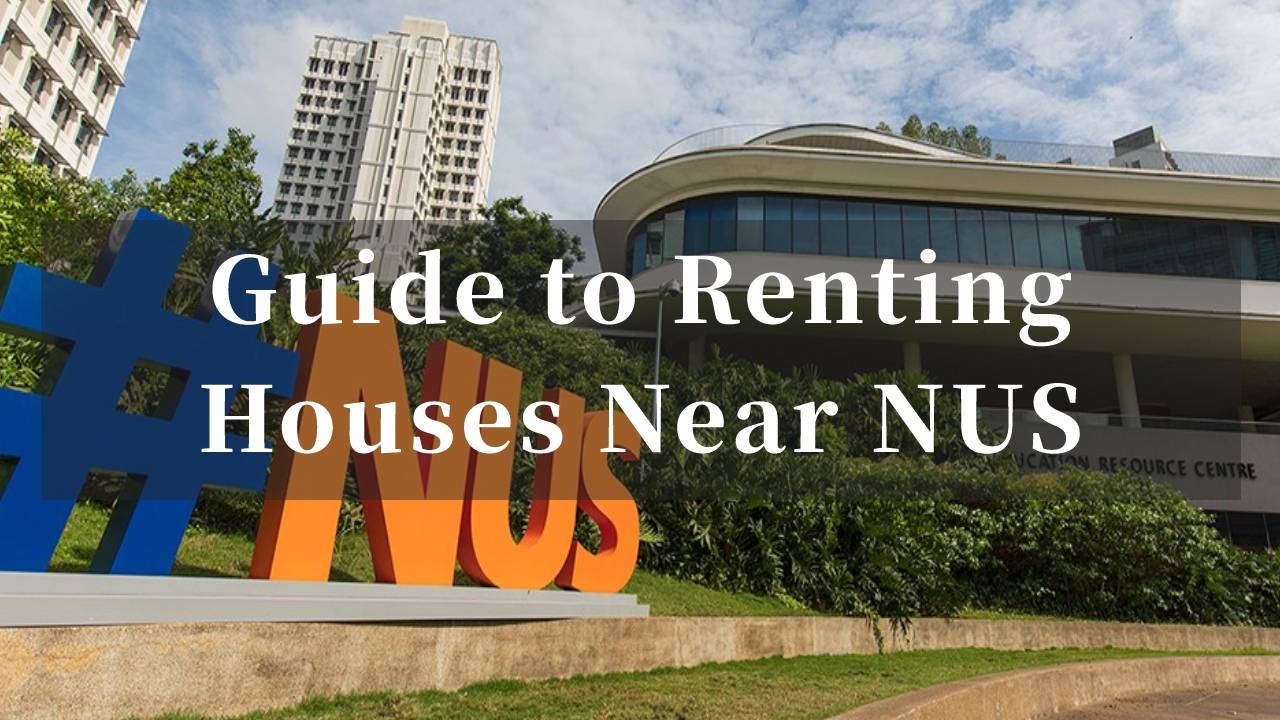
Guide to Renting Accommodation Near National University of Singapore
The National University of Singapore (NUS), as one of the top-notch institutions of higher learning in Asia, draws a large number of international students to pursue their studies. However, finding a suitable place to live can be a daunting task for those newly arrived international students. This article will present a comprehensive guide to renting accommodation near NUS to assist you in finding your desired residence.Locations for Renting near NUSThe NUS campus is vast, and its various faculties are scattered across different directions. Therefore, students from different faculties can consider renting in nearby areas. The distribution map of NUS faculties is as follows:Zooming out, you can observe the distribution of the areas around NUS. ▲Yong Siew Toh Conservatory of Music, College of Design and Engineering, Faculty of Arts and Social Sciences, NUS Computing, Business School, YIH, RMI, and ISS are all situated on the west and south sides of the campus, close to Clementi and the West Coast.▲The Faculty of Science and the Yong Loo Lin School of Medicine are on the east side of the campus and are relatively near One North, Dover, and Queenstown.▲The School of Continuing and Lifelong Education is located in Utown, on the north side of the campus. Clementi and Dover are convenient accommodation options.▲NUS Law faculty and the Lee Kuan Yew School of Public Policy are not on the main campus but are located at the Bukit Timah Campus. Houses around this area can be taken into account. There are also shuttle bus services between the main campus and the Bukit Timah Campus, with a journey time of about half an hour.Zooming out even further, you’ll find more diverse options.▲Closest to the School (Orange)Clementi, West Coast, One North, and Dover are the nearest to the school. The closest ones are within a ten-minute walking distance to the school, but such accommodation is scarce and rather old. Those a bit further away require a commuting time of about twenty minutes. Since these places are the most convenient, the accommodation tends to be in high demand. There are more options in Clementi and West Coast, so you can look in this area. The accommodation in One North and Dover is relatively limited.▲Better Environment (Green)Jurong East, Pandan River, ULU Pandan, Holland, and Queenstown are a bit further away, but they offer a better environment and more condos. The commuting time is over half an hour, which is still acceptable. Many students choose to live near Pandan River, Buona Vista, and Queenstown. Additionally, Jurong East is the largest shopping district closest to the school, home to shopping centers like IMM, JEM, and Westgate are located.▲Further Away (Purple)Even more distant options include Chinese Garden and Bukit Timah. The former has relatively inexpensive houses but is rather far, with a commuting time to NUS of 40-50 minutes. The latter is a wealthy area with relatively expensive houses but an excellent living environment. They can also be considered as alternatives.In general, Singapore is not overly large, and there are shuttle buses on the NUS campus. Thus, it is quite convenient to live in the areas near the school. It is not necessary to live adjacent to one's faculty. Places within a 30-minute commuting distance to the school are relatively convenient and acceptable.Types of Rental Accommodation in SingaporeThere are mainly two types of residential properties: HDB flats and condos.HDB FlatsThese are subsidized housing constructed by the Singapore government and are relatively affordable. There are food courts and public transportation nearby, making life convenient. However, the environment and facilities may not be as good as those of condos. HDB flats do not have enclosed communities, and each building has a separate number (which can be used to identify a specific flat when looking for an address). But the government has a series of strict regulations on the rental of HDB flats.Rent: Common rooms range from $800 to $1200, and master rooms range from $1300 to $2000.Lease Term: Minimum of 6 months.Note: During the school opening season, the rent near NUS will increase significantly.CondosSimilar to commercial housing complexes in China, they have an enclosed community environment with complete internal supporting facilities such as swimming pools, gyms, clubs, and 24-hour security. The overall quality is higher, and one can enjoy a more comfortable and safe living environment.Rent: Common rooms range from $1000 to $1800, and master rooms range from $1500 to $2500.Lease Term: Minimum of 3 months.There is also a commercial student apartment (co-living), which is a popular choice among many students.Student ApartmentsThere are single rooms, double rooms, and multi-person rooms. The rooms are furnished with beds, desks, wardrobes, etc., allowing for a move-in with just personal belongings. There are also shared kitchens, laundry rooms, study rooms, gyms, and other supporting facilities in the apartment, which are shared by the whole community. Generally, such apartments have central management services, and the rent includes utilities, WiFi, regular cleaning services, etc.Rent: Ranges from $500 to $1500.Lease Term: Minimum of 1 month.Rental Process and PrecautionsRental ProcessSearch for accommodation and view properties - Sign the lease - Pay the deposit and rent - Pay the rental stamp duty - Move in - Check out.When renting, you must be extremely vigilant. Try to choose formal platforms and certified agents to avoid rental scam.Related Articles:Rental Scams in Singapore and How to Avoid themIf you choose to rent an HDB flat, you need to meet the eligibility requirements and comply with relevant regulations.Related Articles:Renting HDB flats:Eligibility Conditions and GuidelinesRenting HDB flats:Tenancy MattersRenting HDB flats:RegulationsRegarding the tenancy agreement, matters to note during the tenancy period, check-out requirements, etc., you need to understand them in advance to avoid disputes.Related Articles:Singapore Rental Guide: Easily Find Your Ideal HomeTenants must see:Singapore Tenancy Agreement and Key TermsIt is recommended to use Housebell to find houses,which is reliable, convenient, and hassle-free. If you have any questions, you can contact the online customer service, and they will provide you with professional assistance.
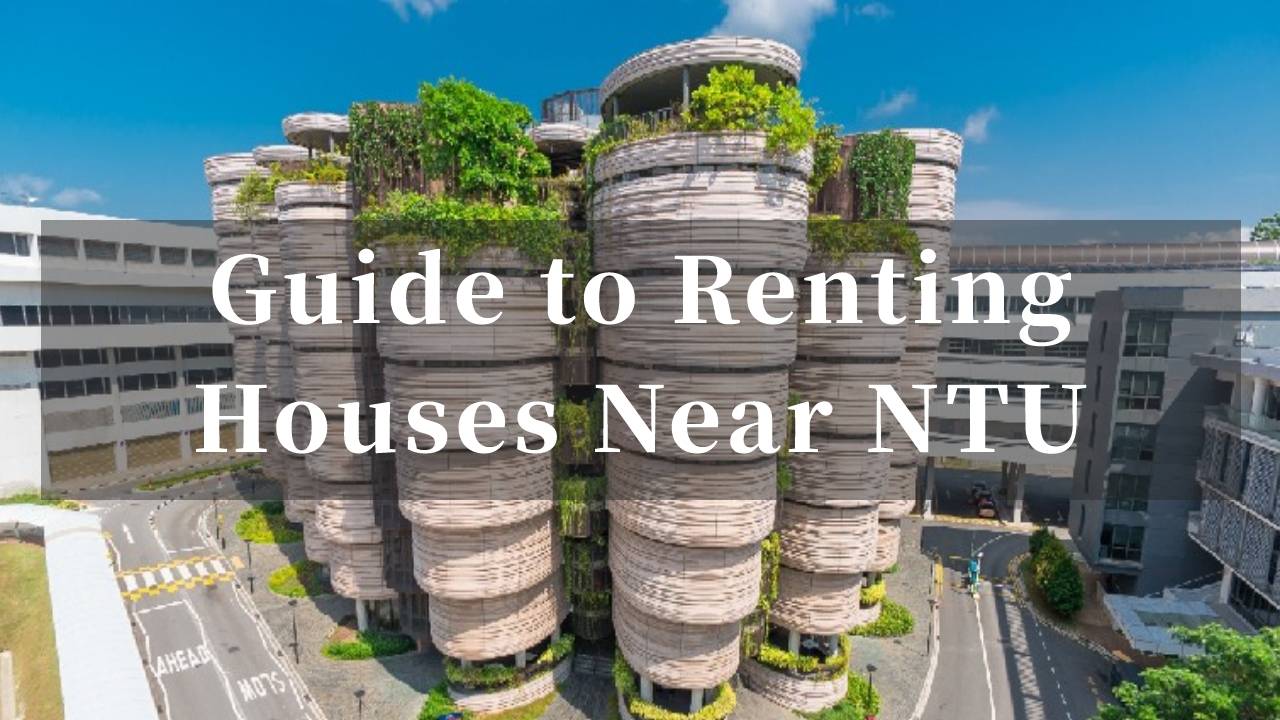
Guide to Renting Accommodation Near Nanyang Technological University
Nanyang Technological University (NTU) is located in the western part of Singapore. Reowned for its high-quality educational resources and beautiful campus environment, it attracts a large number of international students. For those of you who are about to study or work at NTU, choosing a suitable place to live is of utmost importance. This article will provide you with a guide to renting accommodation near NTU to help you quickly find your desired residence.Locations for Renting near NTUNanyang Technological University (NTU) is situated in the western part of Singapore, bordered by hills to the west; herefore, when renting a house, it is advisable to look eastward. Most students will choose the areas along the Green Line of the subway, between Pioneer Station and Jurong East Station. Since NTU is in a relatively remote location, commuting is the first factor to consider. The public transportation methods to NTU are as follows:• From Pioneer MRT Station, you can take Bus 179 or the Green Line shuttle bus directly to the interior of the campus.• From Boon Lay MRT Station, you can take Bus 179 or Bus 199 directly to the interior of the campus. Here is the terminal station of these two buses, offering greater convenience. However, the route of Bus 199 is more circuitous and takes longer. Alternatively, you can also take the MRT from Boon Lay MRT Station to Pioneer MRT Station and then take the Green Line shuttle bus. Even if you walk, it only takes 12 minutes between the two subway stations, which is very close.• For locations farther away, it is recommended to take the MRT to either of the two aforementioned stations and then transfer to the bus or shuttle bus.The following is an introduction to the rental and living situations near the Green Line subway stations.PioneerTransportation: Direct access by Green Line shuttle bus/Bus 179Dining and Shopping: Pioneer Mall, food courtsHousing: Mainly HDBBoon LayTransportation: Direct access by Bus 179/Bus 199, take the MRT to Pioneer and transfer to the shuttle bus or another busDining and Shopping: Jurong Point shopping mall is located right outside the MRT station, offering a one-stop solution for clothing, food, housing, and transportation.Housing: Mainly HDB. There is a popular condo, The Centris, adjacent to Jurong Point. Coliwoo here is also a popular choice among students. Lakeside - Chinese GardenTransportation: Take the MRT to Pioneer and transfer to the shuttle bus or another busDining and Shopping: This area primarily features shophouses and hawker centers in HDB zones, offering affordable and down-to-earth dining and shopping options.Housing: There are numerous condos, typically newer in age, offering good environment and scenic views.Jurong EastTransportation: Take the subway to Pioneer and transfer to the shuttle bus or another bus. Jurong East is also an interchange station for the Green Line and Red Line MRT.Dining and Shopping: Jurong East serves as the largest commercial district in the western part of Singapore. Shopping centers such as IMM, JEM, and Westgate offer comprehensive amenities for dining, shopping, and entertainment.Housing: There are very few condos, and the rental prices is relatively high.Summary:• The area from Pioneer to Boon Lay is the closest to the school and has direct access by bus/shuttle bus without the need for transfer. The houses are mainly HDB, and condos are even more popular. The surrounding amenities are relatively convenient.• In the area from Lakeside to Chinese Garden, there are more condo options with good scenery, but the supporting facilities are slightly lacking.• Jurong East is the farthest, with high prices and the fewest options, but it is the most prosperous, with complete supporting facilities and more convenient access to the city center.When choosing a rental property, the closer it is to the subway line, the more convenient the commute. However, be careful that the room is not directly facing the railway line to avoid vibrations and noise when the MRT passes.Types of Rental Housing in SingaporeResidential properties in Singapore are mainly divided into two types: HDB flats and private condos.HDB FlatsHDB flats are public housing built by the Singapore government as affordable options. They are usually located near hawker centers and public transport, making life convenient. However, the environment and facilities may not be as good as those in condominiums. HDB flats do not have gated communities, and each block is assigned a unique number to help locate specific flats. The government imposes strict regulations on renting out HDB flats.Rent:Common room: $800-$1200, Master bedroom: $1300-$2000Lease Term:Minimum 6 monthsPrivate CondosPrivate condominiums are similar to commercial housing estates in China. They have gated environments with comprehensive facilities such as swimming pools, gyms, clubhouses, and 24-hour security. They offer a higher standard of living and a more comfortable and secure residential environment.Rent:Common room: $1000-$1800, Master bedroom: $1500-$2500Lease Term:Minimum 3 monthsThere is also a commercial student apartment (co-living), which is a popular choice among many students.Student ApartmentsThere are single rooms, double rooms, and multi-person rooms. The rooms are furnished with beds, desks, wardrobes, etc., allowing for a move-in with just personal belongings. There are also shared kitchens, laundry rooms, study rooms, gyms, and other supporting facilities in the apartment, which are shared by the whole community. Generally, such apartments have central management services, and the rent includes utilities, WiFi, regular cleaning services, etc.Rent: Ranges from $500 to $1500.Lease Term: Minimum of 1 month.Rental Process and TipsRental ProcessSearch for properties → View properties → Sign tenancy agreement → Pay deposit and rent → Pay stamp duty → Move in → Move outWhen renting, always be vigilant and choose reputable platforms or certified agents to avoid rental scams.Related Articles:Rental Scams in Singapore and How to Avoid themIf you choose HDB flats, you must meet the eligibility criteria and comply with relevant regulations.Related Articles:Renting HDB flats:Eligibility Conditions and GuidelinesRenting HDB flats:Tenancy MattersRenting HDB flats:RegulationsIt is important to familiarize yourself with the tenancy agreement, obligations during the lease period, and move-out requirements to avoid disputes.Related Articles:Singapore Rental Guide: Easily Find Your Ideal HomeTenants must see:Singapore Tenancy Agreement and Key TermsIt is recommended to use Housebell to find houses,which is reliable, convenient, and hassle-free. If you have any questions, you can contact the online customer service, and they will provide you with professional assistance.
Download Housebell App to experience more features
ResaleGadgets,Forum,Q&A,HomeServices,Recommendations


